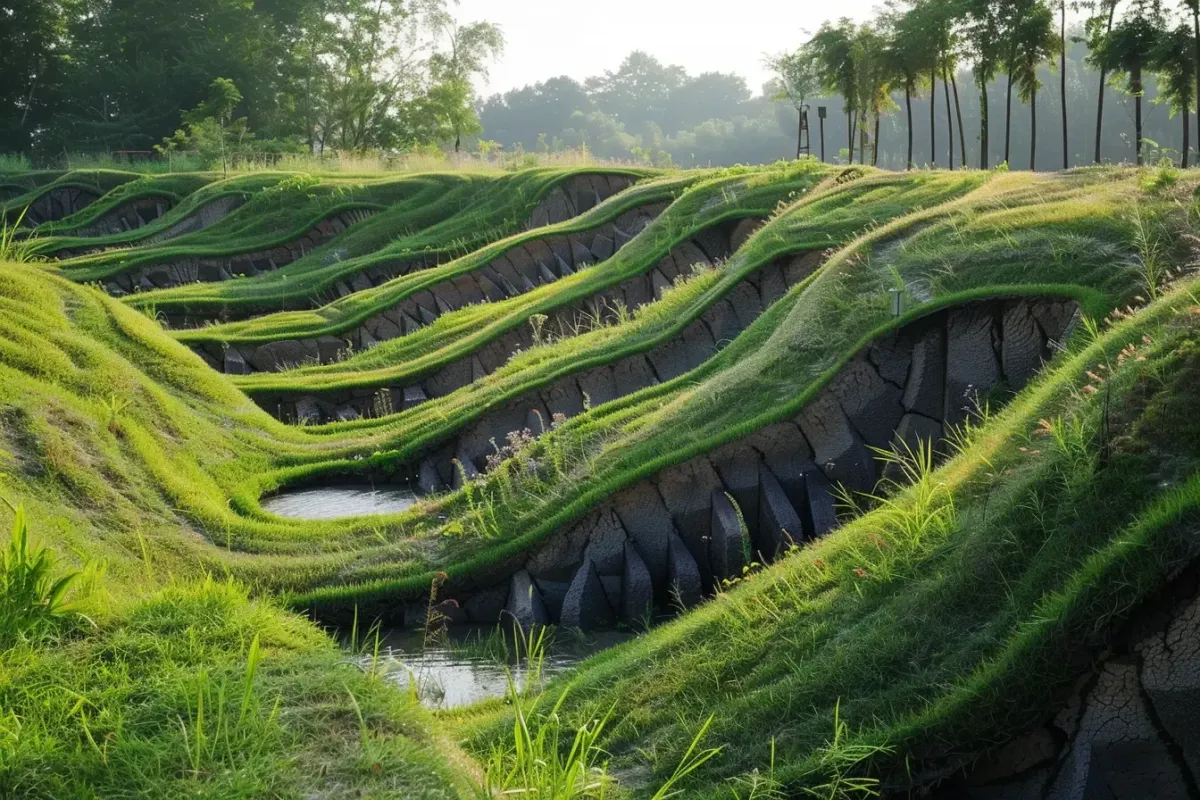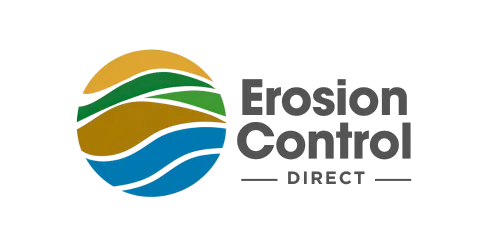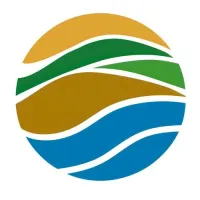By calling this number, you consent to receive a follow-up text message from Erosion Control Direct if the call is missed
By calling this number, you consent to receive a follow-up text message from Erosion Control Direct if the call is missed
The Erosion Control Direct Blog
Where Expertise Meets Innovation in Erosion Management
The Erosion Control Direct Blog
Where Expertise Meets Innovation in Erosion Management
Featured Insights
From the Experts: Navigating the Landscape of Erosion Control

Emerging Trends: The Future of Erosion Control Solutions and Technologies
Erosion control is a critical aspect of environmental management, construction, and land preservation. As we face increasing challenges from climate change, urbanization, and agricultural practices, the need for innovative and effective erosion control solutions has never been greater. This comprehensive guide will explore the emerging trends and technologies shaping the future of erosion control, providing you with the knowledge to stay ahead in this evolving field.
When it comes to implementing erosion control measures, having access to high-quality erosion control products is crucial. These products form the foundation of any successful erosion management strategy, helping to prevent soil loss, protect water quality, and maintain site stability.
The Current State of Erosion Control
Erosion is the process by which soil, rock, and other surface materials are worn away and transported by natural forces such as wind and water. This process can lead to significant environmental and economic impacts, including:
Loss of fertile topsoil
Sedimentation in water bodies
Damage to infrastructure
Reduced agricultural productivity
Increased risk of flooding and landslides
To address these challenges, erosion control practices have traditionally relied on a combination of vegetative, structural, and management techniques. However, recent advancements in technology and materials are revolutionizing the field, offering new and more effective solutions.
Emerging Technologies in Erosion Control
1. Artificial Intelligence (AI) and Machine Learning
AI and machine learning are poised to revolutionize erosion control operations by introducing automation and precision into tasks that were once solely reliant on human expertise. These technologies can analyze vast amounts of data to identify areas at risk of erosion, predict potential sediment runoff, and optimize erosion control measures accordingly.
Benefits of AI in Erosion Control:
Enhanced efficiency through automation of repetitive tasks
Predictive analytics for proactive erosion prevention
Precision landscaping tailored to specific site conditions and erosion risks
2. Drones and Remote Sensing
Drones and remote sensing technologies are transforming the way we inspect, monitor, and manage erosion control projects. Their ability to capture high-resolution aerial imagery and video provides valuable insights into the condition of slopes, waterways, and erosion control structures.
Applications of Drones in Erosion Control:
Regular inspections of erosion control sites
Precision monitoring of soil erosion rates and sediment deposition patterns
Generation of detailed 3D models for comprehensive topography and erosion risk assessment
3. Sustainable Materials
Environmental consciousness is driving the demand for sustainable erosion control materials that minimize their impact on the environment while effectively controlling erosion. Some innovative solutions gaining traction include:
Biodegradable mulches
Self-healing concrete
Erosion control blankets made from recycled materials
Benefits of Sustainable Materials:
Reduced environmental footprint
Minimized landfill use
Enhanced soil health and long-term environmental sustainability
4. Geosynthetics
Geosynthetic materials have revolutionized erosion control in construction and landscaping. These synthetic products, designed to interact with soil and other geotechnical materials, offer superior stability, durability, and flexibility compared to traditional methods.
Types of Geosynthetics:
Geotextiles
Geomembranes
Geogrids
Advantages of Geosynthetics:
Lightweight and easy to install
Durable and long-lasting
Environmentally friendly, reducing the need for natural resources
Integrated Approach to Erosion Control
The future of erosion control lies in adopting an integrated approach that combines technological advancements, sustainable materials, and a holistic understanding of erosion processes. By considering all factors that contribute to erosion, including soil type, rainfall patterns, and vegetation cover, erosion control professionals can design and implement effective mitigation strategies.
Case Study: Seaford Head
A real-world example of innovative erosion control practices can be seen at Seaford Head, a nationally important heritage site in the UK. According to UCL’s Institute of Archaeology, this site is at increasing risk of coastal erosion related to accelerating climate change. A new initiative involving Archaeology South-East is investigating and recording the site, highlighting the importance of integrating advanced technologies and sustainable practices in erosion control.
The Future of Erosion Control: Trends to Watch
1. Increased Use of AI and Machine Learning
As AI and machine learning technologies continue to advance, their applications in erosion control are expected to expand. These technologies will enable more accurate predictions, real-time monitoring, and automated interventions, significantly improving the effectiveness of erosion control measures.
2. Expansion of Drone Technology
The use of drones in erosion control is likely to become more widespread, with advancements in drone technology making them more accessible and affordable. Drones will play a crucial role in site inspections, monitoring, and data collection, providing valuable insights for erosion control professionals.
3. Growth of Sustainable Materials Market
The demand for sustainable erosion control materials is expected to grow as environmental awareness increases. Innovations in biodegradable and recycled materials will continue to emerge, offering more eco-friendly options for erosion control projects.
4. Integration of Geosynthetics in Construction
Geosynthetics will become increasingly integrated into construction and landscaping projects, providing effective solutions for soil reinforcement, slope stabilization, and sediment control. The versatility and durability of geosynthetics will make them a preferred choice for many erosion control applications.
Conclusion
As we navigate the evolving landscape of erosion control, technology, sustainability, and integrated planning will play pivotal roles in shaping the future of this critical field. By harnessing the power of AI, drones, sustainable materials, and geosynthetics, we can enhance our ability to protect our environment from the damaging effects of erosion and ensure the long-term health and resilience of our landscapes.
When considering erosion control for parks, many of these emerging technologies and materials can be adapted to enhance the effectiveness of erosion control measures. Similarly, forest erosion control will continue to evolve, offering new opportunities and solutions for managing erosion in various settings.
Q&A
Q: What are the benefits of using AI in erosion control?
A: AI provides enhanced efficiency, predictive analytics, and targeted interventions, enabling proactive and precise erosion control measures.
Q: How do drones help in erosion control?
A: Drones conduct regular inspections, monitor soil erosion rates, and generate detailed 3D models, providing valuable data for real-time decision-making.
Q: What are some examples of sustainable materials used in erosion control?
A: Examples include biodegradable mulches, self-healing concrete, and erosion control blankets made from recycled materials.
Q: What are geosynthetics, and how are they used in erosion control?
A: Geosynthetics are synthetic materials used for soil reinforcement, slope stabilization, and sediment control. They offer superior stability, durability, and flexibility compared to traditional methods.
Q: What is the future of erosion control?
A: The future of erosion control involves increased use of AI, expansion of drone technology, growth of sustainable materials, and integration of geosynthetics in construction.
Q: How can sustainable materials enhance erosion control?
A: Sustainable materials reduce the environmental footprint, minimize landfill use, and enhance soil health, contributing to long-term environmental sustainability.
Q: What role do geosynthetics play in erosion control?
A: Geosynthetics provide effective solutions for soil reinforcement, slope stabilization, and sediment control, offering lightweight, durable, and environmentally friendly options.
Q: How does AI improve the effectiveness of erosion control measures?
A: AI analyzes vast amounts of data to identify areas at risk of erosion, predict potential sediment runoff, and optimize erosion control measures, ensuring maximum effectiveness.
Q: What advancements are expected in drone technology for erosion control?
A: Advancements in drone technology will make them more accessible and affordable, enhancing their role in site inspections, monitoring, and data collection for erosion control.
Q: Why is an integrated approach important in erosion control?
A: An integrated approach combines technological advancements, sustainable materials, and a holistic understanding of erosion processes, enabling effective and comprehensive erosion control strategies.
Get Expert Erosion Control Solutions
Implementing the right erosion control solutions is crucial for protecting your property and the environment. At Erosion Control Direct, we’re committed to providing you with top-quality products and expert advice to address your specific erosion control needs. For personalized assistance and product recommendations, don’t hesitate to reach out:
Call us at (888) 920-5005 to speak with one of our erosion control experts.
Visit our website at https://erosioncontroldirect.com to browse our product range or submit an online inquiry.
For detailed quotations, email us at [email protected].
Let us help you find the perfect erosion control solution for your project. Contact Erosion Control Direct today and take the first step towards effective soil stabilization and environmental protection.

Emerging Trends: The Future of Erosion Control Solutions and Technologies
Erosion control is a critical aspect of environmental management, construction, and land preservation. As we face increasing challenges from climate change, urbanization, and agricultural practices, the need for innovative and effective erosion control solutions has never been greater. This comprehensive guide will explore the emerging trends and technologies shaping the future of erosion control, providing you with the knowledge to stay ahead in this evolving field.
When it comes to implementing erosion control measures, having access to high-quality erosion control products is crucial. These products form the foundation of any successful erosion management strategy, helping to prevent soil loss, protect water quality, and maintain site stability.
The Current State of Erosion Control
Erosion is the process by which soil, rock, and other surface materials are worn away and transported by natural forces such as wind and water. This process can lead to significant environmental and economic impacts, including:
Loss of fertile topsoil
Sedimentation in water bodies
Damage to infrastructure
Reduced agricultural productivity
Increased risk of flooding and landslides
To address these challenges, erosion control practices have traditionally relied on a combination of vegetative, structural, and management techniques. However, recent advancements in technology and materials are revolutionizing the field, offering new and more effective solutions.
Emerging Technologies in Erosion Control
1. Artificial Intelligence (AI) and Machine Learning
AI and machine learning are poised to revolutionize erosion control operations by introducing automation and precision into tasks that were once solely reliant on human expertise. These technologies can analyze vast amounts of data to identify areas at risk of erosion, predict potential sediment runoff, and optimize erosion control measures accordingly.
Benefits of AI in Erosion Control:
Enhanced efficiency through automation of repetitive tasks
Predictive analytics for proactive erosion prevention
Precision landscaping tailored to specific site conditions and erosion risks
2. Drones and Remote Sensing
Drones and remote sensing technologies are transforming the way we inspect, monitor, and manage erosion control projects. Their ability to capture high-resolution aerial imagery and video provides valuable insights into the condition of slopes, waterways, and erosion control structures.
Applications of Drones in Erosion Control:
Regular inspections of erosion control sites
Precision monitoring of soil erosion rates and sediment deposition patterns
Generation of detailed 3D models for comprehensive topography and erosion risk assessment
3. Sustainable Materials
Environmental consciousness is driving the demand for sustainable erosion control materials that minimize their impact on the environment while effectively controlling erosion. Some innovative solutions gaining traction include:
Biodegradable mulches
Self-healing concrete
Erosion control blankets made from recycled materials
Benefits of Sustainable Materials:
Reduced environmental footprint
Minimized landfill use
Enhanced soil health and long-term environmental sustainability
4. Geosynthetics
Geosynthetic materials have revolutionized erosion control in construction and landscaping. These synthetic products, designed to interact with soil and other geotechnical materials, offer superior stability, durability, and flexibility compared to traditional methods.
Types of Geosynthetics:
Geotextiles
Geomembranes
Geogrids
Advantages of Geosynthetics:
Lightweight and easy to install
Durable and long-lasting
Environmentally friendly, reducing the need for natural resources
Integrated Approach to Erosion Control
The future of erosion control lies in adopting an integrated approach that combines technological advancements, sustainable materials, and a holistic understanding of erosion processes. By considering all factors that contribute to erosion, including soil type, rainfall patterns, and vegetation cover, erosion control professionals can design and implement effective mitigation strategies.
Case Study: Seaford Head
A real-world example of innovative erosion control practices can be seen at Seaford Head, a nationally important heritage site in the UK. According to UCL’s Institute of Archaeology, this site is at increasing risk of coastal erosion related to accelerating climate change. A new initiative involving Archaeology South-East is investigating and recording the site, highlighting the importance of integrating advanced technologies and sustainable practices in erosion control.
The Future of Erosion Control: Trends to Watch
1. Increased Use of AI and Machine Learning
As AI and machine learning technologies continue to advance, their applications in erosion control are expected to expand. These technologies will enable more accurate predictions, real-time monitoring, and automated interventions, significantly improving the effectiveness of erosion control measures.
2. Expansion of Drone Technology
The use of drones in erosion control is likely to become more widespread, with advancements in drone technology making them more accessible and affordable. Drones will play a crucial role in site inspections, monitoring, and data collection, providing valuable insights for erosion control professionals.
3. Growth of Sustainable Materials Market
The demand for sustainable erosion control materials is expected to grow as environmental awareness increases. Innovations in biodegradable and recycled materials will continue to emerge, offering more eco-friendly options for erosion control projects.
4. Integration of Geosynthetics in Construction
Geosynthetics will become increasingly integrated into construction and landscaping projects, providing effective solutions for soil reinforcement, slope stabilization, and sediment control. The versatility and durability of geosynthetics will make them a preferred choice for many erosion control applications.
Conclusion
As we navigate the evolving landscape of erosion control, technology, sustainability, and integrated planning will play pivotal roles in shaping the future of this critical field. By harnessing the power of AI, drones, sustainable materials, and geosynthetics, we can enhance our ability to protect our environment from the damaging effects of erosion and ensure the long-term health and resilience of our landscapes.
When considering erosion control for parks, many of these emerging technologies and materials can be adapted to enhance the effectiveness of erosion control measures. Similarly, forest erosion control will continue to evolve, offering new opportunities and solutions for managing erosion in various settings.
Q&A
Q: What are the benefits of using AI in erosion control?
A: AI provides enhanced efficiency, predictive analytics, and targeted interventions, enabling proactive and precise erosion control measures.
Q: How do drones help in erosion control?
A: Drones conduct regular inspections, monitor soil erosion rates, and generate detailed 3D models, providing valuable data for real-time decision-making.
Q: What are some examples of sustainable materials used in erosion control?
A: Examples include biodegradable mulches, self-healing concrete, and erosion control blankets made from recycled materials.
Q: What are geosynthetics, and how are they used in erosion control?
A: Geosynthetics are synthetic materials used for soil reinforcement, slope stabilization, and sediment control. They offer superior stability, durability, and flexibility compared to traditional methods.
Q: What is the future of erosion control?
A: The future of erosion control involves increased use of AI, expansion of drone technology, growth of sustainable materials, and integration of geosynthetics in construction.
Q: How can sustainable materials enhance erosion control?
A: Sustainable materials reduce the environmental footprint, minimize landfill use, and enhance soil health, contributing to long-term environmental sustainability.
Q: What role do geosynthetics play in erosion control?
A: Geosynthetics provide effective solutions for soil reinforcement, slope stabilization, and sediment control, offering lightweight, durable, and environmentally friendly options.
Q: How does AI improve the effectiveness of erosion control measures?
A: AI analyzes vast amounts of data to identify areas at risk of erosion, predict potential sediment runoff, and optimize erosion control measures, ensuring maximum effectiveness.
Q: What advancements are expected in drone technology for erosion control?
A: Advancements in drone technology will make them more accessible and affordable, enhancing their role in site inspections, monitoring, and data collection for erosion control.
Q: Why is an integrated approach important in erosion control?
A: An integrated approach combines technological advancements, sustainable materials, and a holistic understanding of erosion processes, enabling effective and comprehensive erosion control strategies.
Get Expert Erosion Control Solutions
Implementing the right erosion control solutions is crucial for protecting your property and the environment. At Erosion Control Direct, we’re committed to providing you with top-quality products and expert advice to address your specific erosion control needs. For personalized assistance and product recommendations, don’t hesitate to reach out:
Call us at (888) 920-5005 to speak with one of our erosion control experts.
Visit our website at https://erosioncontroldirect.com to browse our product range or submit an online inquiry.
For detailed quotations, email us at [email protected].
Let us help you find the perfect erosion control solution for your project. Contact Erosion Control Direct today and take the first step towards effective soil stabilization and environmental protection.


Facebook